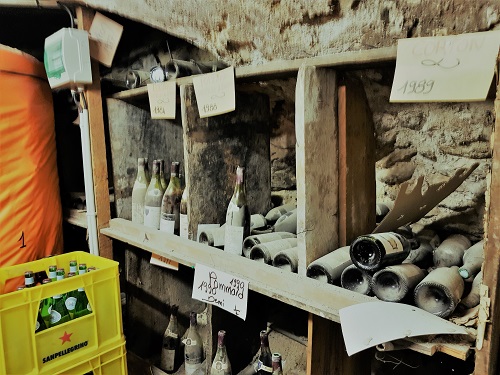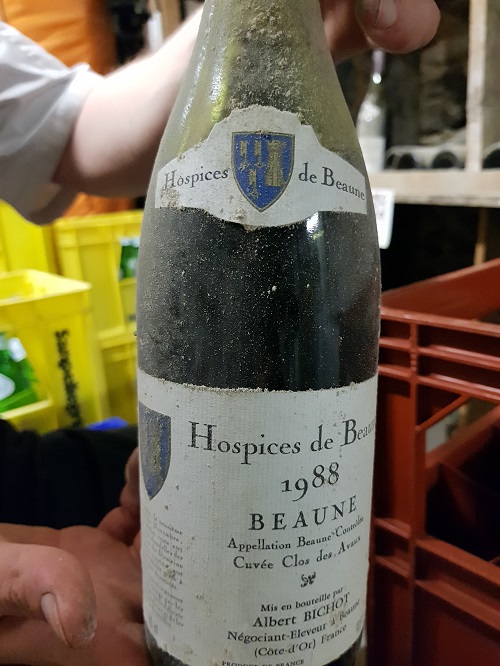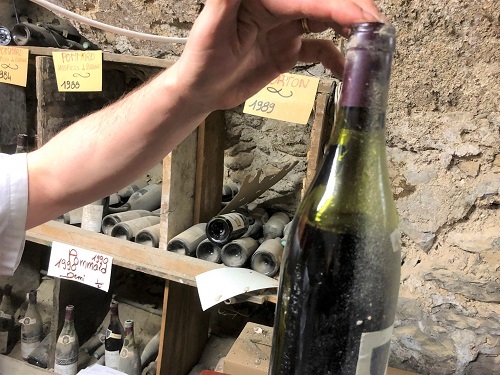The Story of a Catastrophe

We are in France, the homeland of fine wine.
We walk down the stairs of an exclusive restaurant into a dusty wine cellar.
The first we see is this catasprophe! But also a lesson for the future.
The orange boiler on the left heated the wine cellar for years and spoiled the expensive Burgundy wines.
The young chef who took over the famous french restaurant is heart broken.
How could this happen? In a french wine cave? Nobody is here to answer for mistakes of the past.
It just hurts coming down to the treasure chamber and see fine wine gone bad.
You feel it both in your heart and in your wallet: this bottle should have been an auction item.
The young chef is not scared of ghosts, in this spooky stone cellar, but of temperature fluctuation, humidity and light. Shelf life depends on these factors.
Heat is a Killer of Wine.
Heat causes the molecules to move faster. The liquid expands and pushes the cork.
A bottle stored at 23°C will age twice as quickly or, worse, "cook".
At 28°C the cork shrinks letting oxygen in, killing fruit aromas.
Also lack of moisture dries out corks. Ideal humidity is 70% (50-80% is safe). Too much humidity causes mold.
Ideal storage temperature is 13°C (55°F).
The secret of a good long-term storage is to minimalize temperature fluctuations.
By the way, recent studies show that storing wine on its side is useless!
And there´s more.
It is not going to matter what temperature your cellar is, if somewhere along the distribution line, the wine is cooked on the dock, truck, car or in a hot warehouse.
Signs of Heat Damage
- Leak (sticky mess)
- Cork pops out
- Lost brightness
- Darker color
- Taste cooked
"Cooked Wine" tastes like baked fruit and cheap Sherry.

